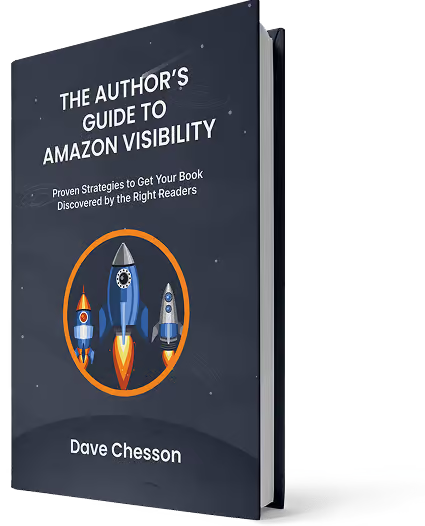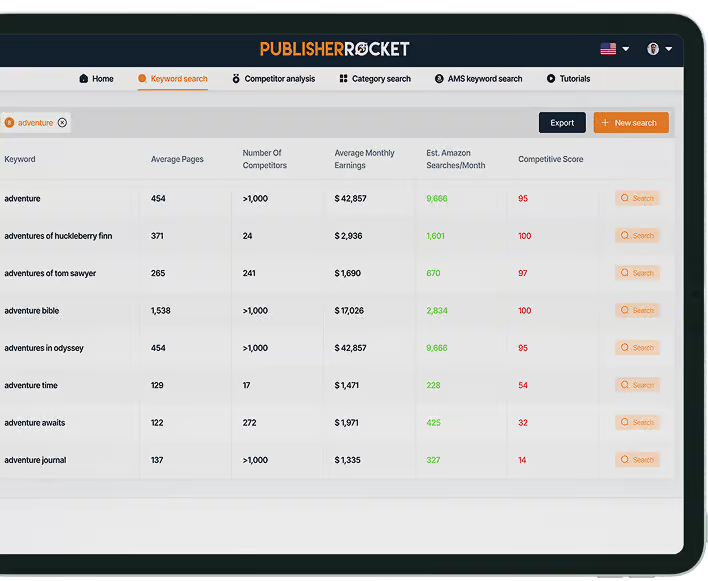If you’ve spent any time studying story structure, you’ve probably heard the term inciting incident. Some writers call it by different names, but the idea is the same: it’s the spark that kicks your story into motion.
Think of Katniss volunteering in The Hunger Games. In that single moment, her life changes direction, and the rest of the story unfolds because of it. That’s an inciting incident in action.
Because it’s such a crucial element, we’re going to take a closer look at what an inciting incident is, why it matters, and how you can craft one that grabs your readers from the very first pages.
And we'll kick things off quick a quick definition…
- What an inciting incident is.
- How to write one.
- Examples of well-known inciting incidents.
What is An Inciting Incident?
An inciting incident is the moment that pushes a story into motion. It’s the event (whether dramatic or subtle) that forces the protagonist out of their routine and into the central conflict.
Writers use different terms for it, including:
- Inciting Event
- Call to Adventure
- The Catalyst
- The Exciting Force
Every strong story has an inciting incident, though some are easier to spot than others. Once you know what to look for, you’ll not only recognize them in books and films, but you’ll also find it easier to create one in your own writing.
(A quick note: yes, technically, you can find stories without a clear inciting incident. But the ones that resonate most with audiences almost always have one. Without it, the story tends to feel incomplete.)
Characteristics of an Inciting Incident
Most stories begin by showing the protagonist’s everyday life. This “ordinary world” looks different depending on genre and character.
- In a sci-fi thriller, the ordinary world might be a crew member working a dangerous mining machine in deep space.
- In a romance, it could be someone returning home every night to an empty apartment and a microwave dinner.
The inciting incident is the event that disrupts this ordinary life. It doesn’t have to be huge or traumatic, but it does need to shift the character’s path.
- In that sci-fi story, maybe a critical piece of equipment fails and endangers the crew.
- In the romance, it could be something as simple as picking up a stranger’s phone in a coffee shop… a chance moment that leads to meeting the love interest.
The easiest way to identify an inciting incident is to look for a clear “before” and “after.” Something happens, and the protagonist can’t simply return to how things were. The story unfolds because of that moment.
Next, let’s look at some examples to see this in action.
7 Examples of Inciting Incidents
Let’s look at how famous stories handle their inciting incidents. Chances are, you already recognize many of these moments instinctively:
1. Star Wars: A New Hope
Luke Skywalker stumbles across Princess Leia’s message to Obi-Wan Kenobi.
While he doesn’t fully step into the adventure until he discovers his aunt and uncle have been killed, that message is the trigger that pulls him toward Obi-Wan and, eventually, the fight against the Empire.
2. The Hunger Games
Katniss Everdeen volunteers to take her sister’s place in the Games. Without Prim’s name being drawn, Katniss would have continued her grim routine in District 12.
Instead, her choice of bravery sets the entire story into motion and makes readers root for her immediately.
3. Harry Potter and the Sorcerer’s Stone
Strange things happen to Harry before the true story kicks in, but the actual inciting incident comes when Hagrid arrives and tells him the truth: he’s a wizard.
That revelation shifts Harry’s life from the Dursleys’ ordinary world into the extraordinary one at Hogwarts.
4. Toy Story
Woody’s comfortable spot as Andy’s favorite toy is upended when Buzz Lightyear arrives.
Buzz doesn’t just threaten Woody’s status… he kicks off the rivalry and chain of events that drive the whole movie.
5. Iron Man
Tony Stark’s life of wealth and arrogance ends when his convoy is ambushed and he’s taken hostage. Forced to build weapons for his captors, he instead creates the first Iron Man suit.
That single choice sets him on a completely new path.
6. Spider-Man
The classic version of Spider-Man’s story begins with Peter Parker being bitten by a radioactive spider.
But even in later adaptations, each film has its own unique inciting moment. In Spider-Man: Homecoming, it comes when Peter uncovers criminals using stolen alien tech.
7. Monsters, Inc.
The story launches when Boo, a human child, sneaks into the monster world through a door left open by Randall.
Because monsters believe human children are toxic, her arrival creates instant chaos and kicks off the heart of the plot.
5 Tips for Writing a Great Inciting Incident
1. Place It Early
There’s no hard-and-fast rule, but most storytelling experts agree the inciting incident should appear within the first 10% of the story. Readers need a glimpse of the protagonist’s normal life, but if you delay the spark for too long, they may lose interest.
Of course, there are exceptions (The Great Gatsby doesn’t hit its inciting moment until nearly a quarter of the way through), but those are rare. For most modern stories, keep it early.
Note: You want to spend only as much time as necessary establishing the protagonist's normal life before hitting this plot point. And that's not to say that anything before the incident can be boring. It still needs to hook the audience, set up the character arc, and provide exposition in a compelling manner.
2. Lean Into the Conflict
The inciting incident should complicate the protagonist’s life, not make it easier. It needs to push them into rising action, where tension builds until the climax.
One caution: if your inciting incident feels bigger or more exciting than the climax, you may need to rebalance. Aim for an event that creates momentum, raises questions, and forces the protagonist to act. And then steadily increase the stakes from there.
3. Connect It to Your Theme
If you already know your story’s theme, use it to strengthen your inciting incident. When the initial disruption ties into the deeper message of your story, it creates cohesion and emotional impact.
For instance, Indiana Jones and the Last Crusade revolves around father–son relationships.
It’s no accident that the story kicks off when Indy learns his father has been kidnapped while searching for the Grail.
4. Make It Personal
Readers connect most when the incident strikes close to home.
If the event threatens something the protagonist deeply values (family, reputation, freedom, or survival), it’s far more compelling than a disruption that only brushes past them.
5. Give the Protagonist No Easy Out
A good inciting incident leaves the protagonist with little choice but to act.
Maybe the door to their old life slams shut, or maybe circumstances make doing nothing impossible.
Either way, the incident should feel like a point of no return.
Still Not Sure? Try One of These
If you’re stuck, there are some tried-and-true types of inciting incidents you can adapt for almost any genre:
Set Up a Mystery
In certain mystery subgenres, especially police procedurals, the inciting incident is a crime (often a murder).
Sometimes the crime has direct ties to the main character (other than being assigned to solve it). Other times, the crime is simply the catalyst that sends the main character on their journey.
However, the mystery doesn’t have to be a crime. It could be a mysterious disappearance (of a person, place, or thing). It could be a code that needs to be broken or a puzzle that needs to be solved. If it leaves the character and the reader wondering what the heck is going on, then it’s a mystery. You can unfold it as the story progresses.
Make Sparks Fly
In most romance stories, the inciting incident is when the two protagonists first interact. This doesn't have to be an in-person interaction (take Sleepless in Seattle as an example), but it often is. In some romance subgenres, this first meeting is rocky. In others, it's love at first sight.
Either way, there needs to be a good reason for the conflict that follows this incident. Otherwise, the story would be over almost as soon as it started.
Introduce the Antagonist
Many action stories are only as good as their villains. This is why these types of stories often have inciting incidents that are put into motion by the antagonist. In Die Hard, John McClane's life is already hard enough as he's trying to save his marriage. But when Hans Gruber shows up, it gets a whole lot harder.
Gruber and his crew showing up forces McClane to react, and this gets the story off and running. So you can't go wrong by having your antagonist incite this key event, making the main character's life hard from the get-go.
Death Works
Death is another classic option.
It could be a murder, a relative passing away, or even something unusual like a stranger leaving the protagonist an inheritance. The specifics vary, but the effect is the same: life is suddenly different.
Turn it Upside Down
Sometimes, the inciting incident is the sudden knowledge that the main character's normal life is a lie. This can be overhearing a conversation, getting a letter, or running into someone who insists that they know them.
The specifics of the how are up to you to determine, but it should be some force acting on the protagonist. In other words, they shouldn't just wake up one day to realize that they've been living a lie. There needs to be a catalyst for it.
Final Word on Inciting Incident
The inciting incident is one of the most important plot points in any story. It usually arrives early, disrupts the protagonist’s ordinary world, and sets the central conflict in motion. From that moment on, things should steadily get harder, building toward the climax.
A strong inciting incident doesn’t just push the plot forward… it also ties into the theme, hooks the reader’s attention, and reveals something about the character that will matter later.
Master this step, and the rest of your story arc becomes much easier to shape.
Happy writing!






